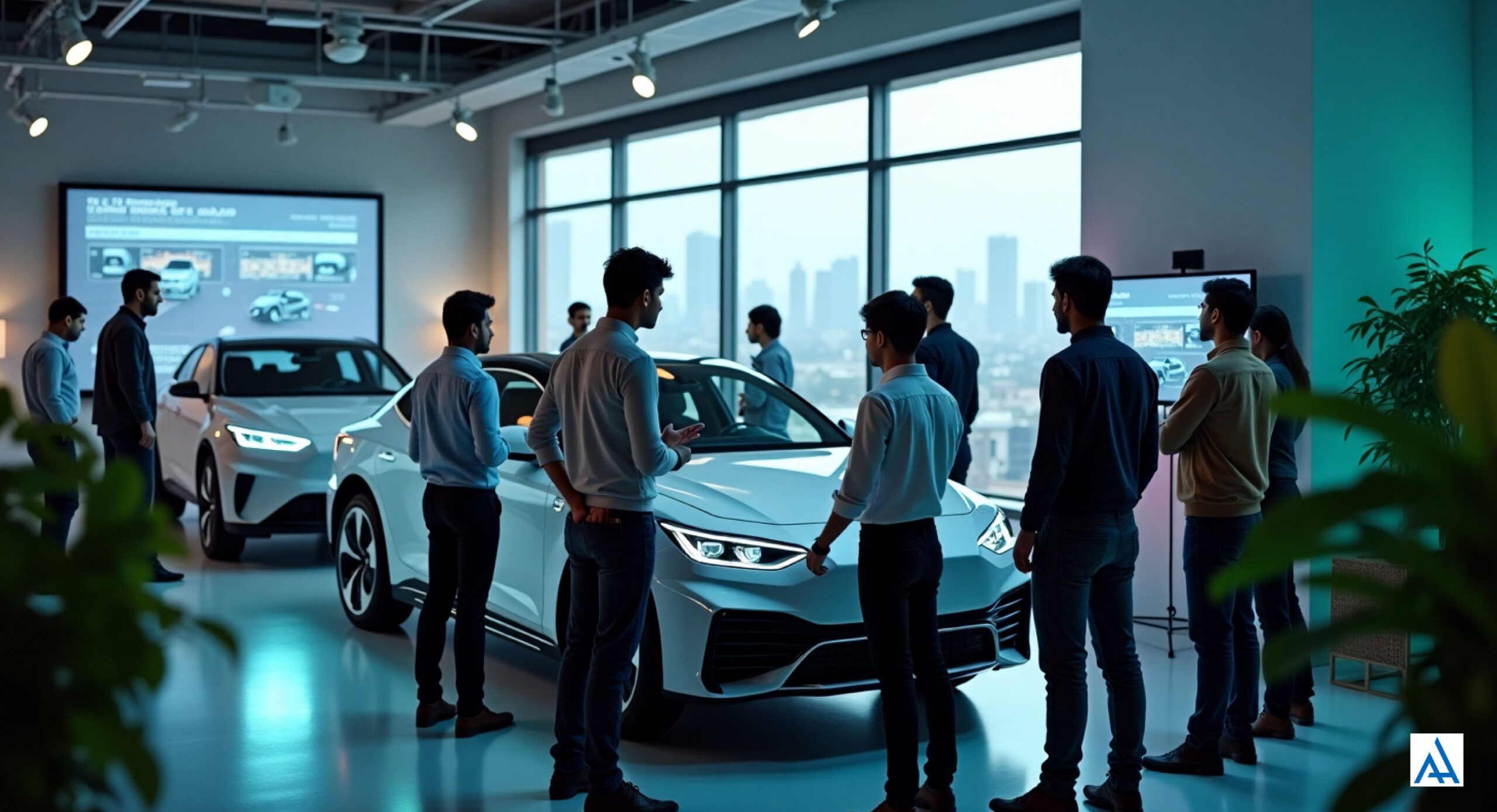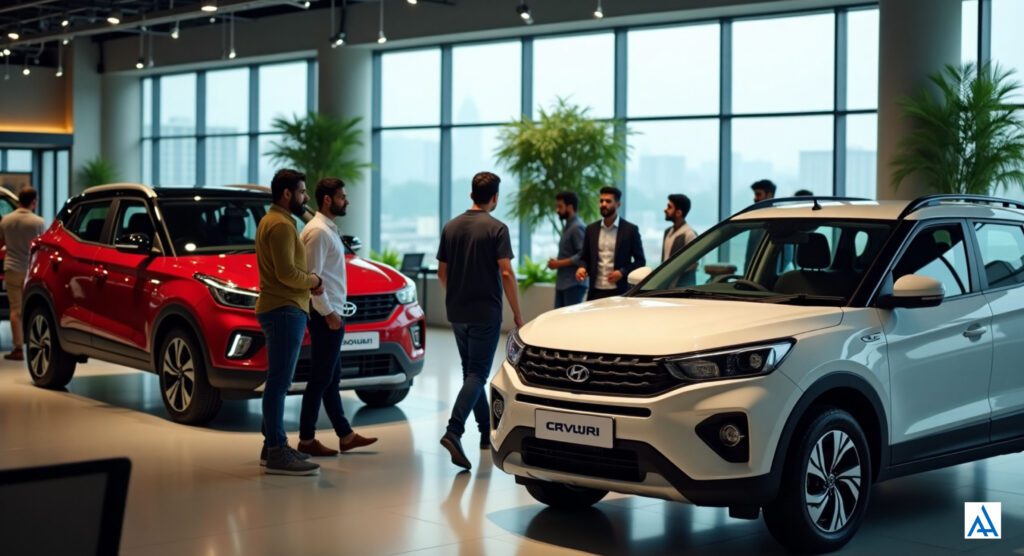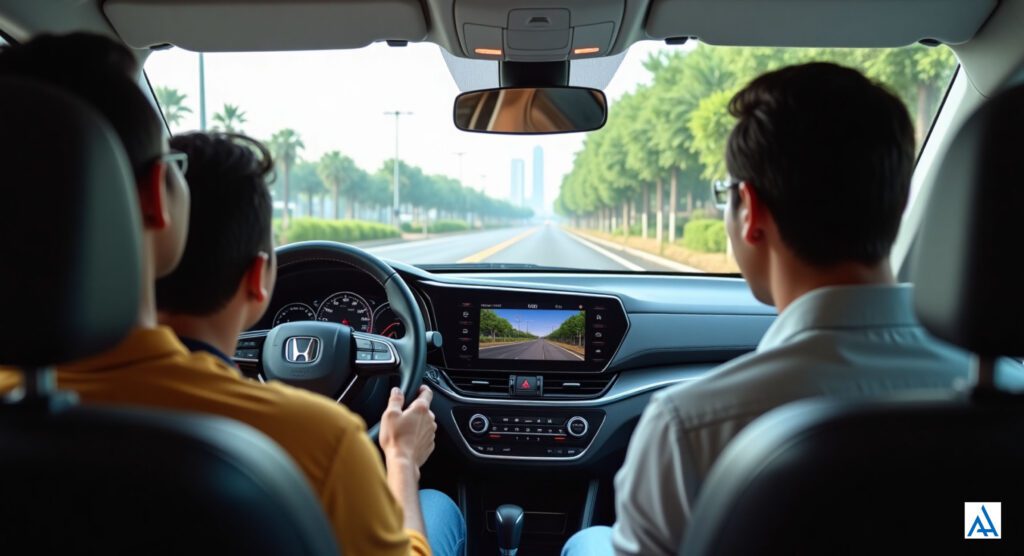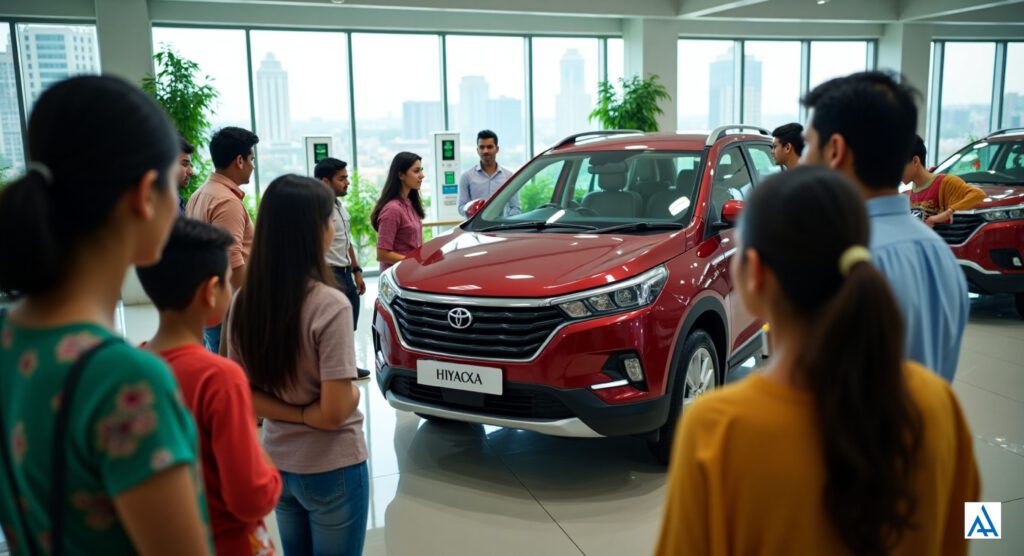In 2025, passenger car autonomy is transforming India’s $150 billion automotive industry, promising safer roads, reduced congestion, and sustainable mobility (Inc42, 2024). With 60.4% of India’s population digitally connected (RBI, 2024) and 63 million MSMEs relying on efficient transport (MSME Ministry, 2024), autonomous cars are gaining traction among 70% of urban drivers seeking smarter solutions (Knight Frank, 2024). As India supports 3,500 IGBC-certified green projects (FICCI, 2024) and navigates a 6.5% GDP growth rate (UJA, 2025), autonomy aligns with the 15% CAGR in automotive tech and 40% renewable energy goals (Economic Times, 2024; CEA, 2024).
Why Passenger Car Autonomy Matters in 2025

Passenger car autonomy, powered by AI, sensors, and connectivity, enables vehicles to operate with minimal or no human input, reducing accidents by 30% and traffic delays by 20% (Financial Express, 2024). In India, where urban congestion costs ₹1.47 lakh crore annually (Economic Times, 2024), autonomous systems address critical challenges for 60.4% digital commuters (RBI, 2024). With 500 million social media users sharing tech trends (Statista, 2025) and 50% of UPI transactions funding mobility (NPCI, 2024), autonomy supports 100+ smart cities and $1 trillion e-commerce markets (Smart Cities Mission, 2025). From Delhi’s busy roads to Bengaluru’s tech hubs, autonomous cars promise safer, greener, and more efficient travel.
As an automotive technology expert, I’ve advised Indian automakers on autonomous solutions. This guide explores seven key trends in passenger car autonomy for 2025, with actionable tips for adoption.
Trends in Passenger Car Autonomy
1. Level 2+ Advanced Driver Assistance Systems (ADAS)
Level 2+ ADAS, costing ₹50,000–₹2 lakh, offers adaptive cruise control and lane-keeping, reducing crashes by 25% (Autocar India, 2025). In Mumbai, 45% of new cars feature ADAS, enhancing safety (RBI, 2024).
Actionable Tip: Test ADAS-equipped cars at tata.motors.
2. 5G Vehicle-to-Everything (V2X) Connectivity
5G V2X, priced ₹1–₹3 lakh per vehicle, enables real-time traffic data sharing, cutting delays by 20% (Financial Express, 2024). In Bengaluru, V2X supports smart city mobility (Smart Cities Mission, 2025).
Actionable Tip: Learn about V2X at qualcomm.com.
3. AI-Powered Sensor Systems
AI with LIDAR and cameras, costing ₹1–₹5 lakh, improves obstacle detection by 30% (The Hindu, 2024). In Delhi, AI sensors reduce accidents for UPI-linked commuters (NPCI, 2024).
Actionable Tip: Explore AI tech at nvidia.com.
4. Regulatory Advancements

The Motor Vehicles (Amendment) Act, updated in 2025, permits Level 3 autonomy trials, ensuring safety with ₹1 crore fines for violations (Economic Times, 2024). In Chennai, regulations enable testing.
Actionable Tip: Review laws at morth.nic.in.
5. Electric Autonomous Vehicles
Electric autonomous cars, like Mahindra XUV400 (₹15–₹20 lakh), cut emissions by 15%, aligning with 3,500 green projects (FICCI, 2024). In Hyderabad, EVs support 40% renewable energy goals (CEA, 2024).
Actionable Tip: Check EVs at mahindra.com.
6. Ride-Sharing Autonomy
Level 3 autonomous taxis, costing ₹20–₹50 lakh, reduce ride costs by 10% (Financial Express, 2024). In Pune, ride-sharing fleets streamline urban mobility (Smart Cities Mission, 2025).
Actionable Tip: Learn about autonomous fleets at olaelectric.com.
7. Public Awareness Campaigns
Government campaigns, costing ₹5 crore annually, educate 60.4% digital users, boosting trust in autonomy by 20% (RBI, 2024). In Ahmedabad, demos drive adoption (Smart Cities Mission, 2025).
Actionable Tip: Follow campaigns at meity.gov.in.
Passenger Car Autonomy Trends Table 2025
| Trend | Cost (₹) | Key Benefits | Impact in India |
|---|---|---|---|
| Level 2+ ADAS | 50,000–2 lakh | Reduces crashes by 25% | Enhances Mumbai road safety |
| 5G V2X Connectivity | 1–3 lakh | Cuts traffic delays by 20% | Supports Bengaluru smart cities |
| AI Sensor Systems | 1–5 lakh | Improves detection by 30% | Reduces Delhi accidents |
| Regulatory Advancements | Free (policy) | Enables Level 3 trials | Supports Chennai testing |
| Electric Autonomous EVs | 15–20 lakh | Cuts emissions by 15% | Aligns with Hyderabad green goals |
| Ride-Sharing Autonomy | 20–50 lakh | Reduces ride costs by 10% | Streamlines Pune mobility |
| Public Awareness | Free (campaigns) | Boosts trust by 20% | Drives Ahmedabad adoption |
Applications of Passenger Car Autonomy in India
- Urban Mobility: Eases congestion for 60.4% digital commuters (RBI, 2024).
- E-commerce: Supports last-mile delivery in $1 trillion market (Economic Times, 2024).
- Smart Cities: Enhances transport in 100+ urban projects (Smart Cities Mission, 2025).
- MSMEs: Optimizes logistics for 63 million businesses (MSME Ministry, 2024).
- Sustainability: Aligns with 3,500 green projects via EVs (FICCI, 2024).
Actionable Tip: Test drive ADAS-equipped cars at tata.motors for a taste of autonomy.
Benefits of Passenger Car Autonomy
- Safety: Reduces accidents by 30% (Financial Express, 2024).
- Efficiency: Cuts traffic delays by 20% (Economic Times, 2024).
- Cost Savings: Lowers ride-sharing costs by 10% (Financial Express, 2024).
- Eco-Friendly: Supports 40% renewable energy goals with EVs (CEA, 2024).
Actionable Tip: Explore electric autonomous models for sustainable driving.





